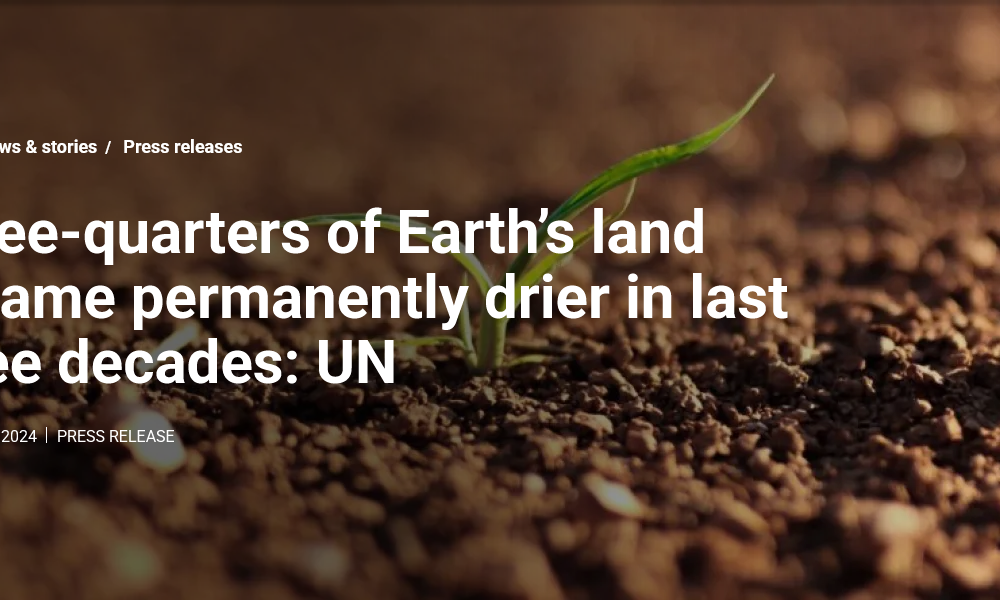MEDIA FOR CHANGE NETWORK
Three-quarters of Earth’s land became permanently drier in last three decades: UN
Published
9 months agoon
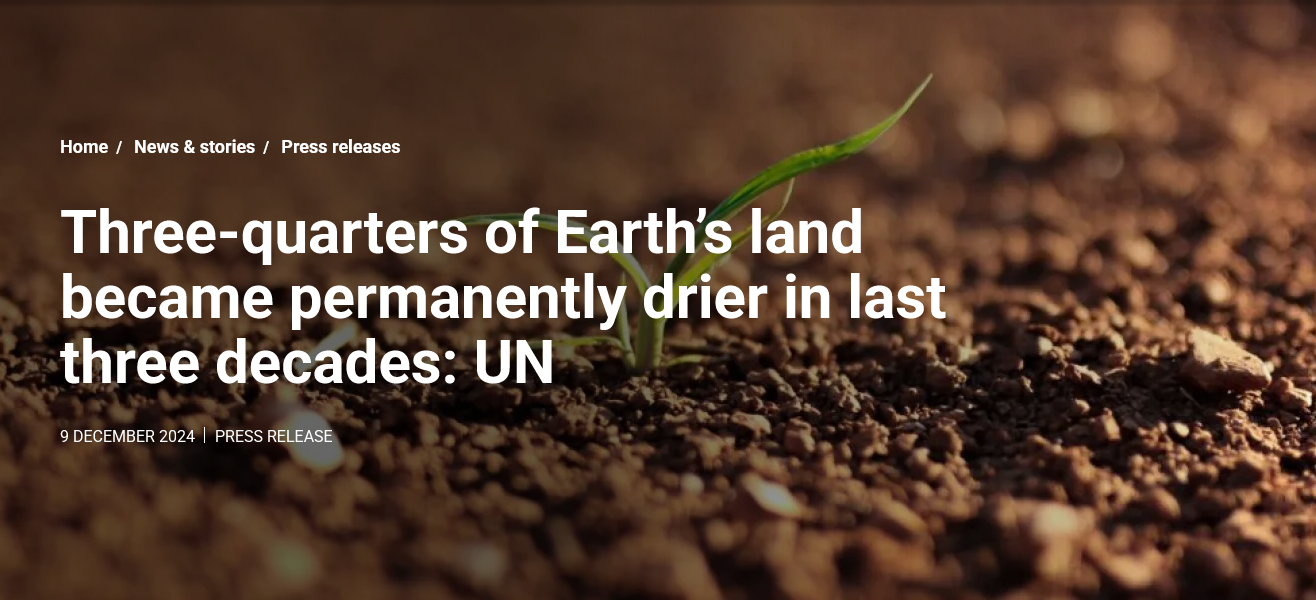
Riyadh, Saudi Arabia – Even as dramatic water-related disasters such as floods and storms intensified in some parts of the world, more than three-quarters of Earth’s land became permanently drier in recent decades, UN scientists warned today in a stark new analysis.
Some 77.6% of Earth’s land experienced drier conditions during the three decades leading up to 2020 compared to the previous 30-year period, according to the landmark report from the UN Convention to Combat Desertification (UNCCD).
Over the same period, drylands expanded by about 4.3 million km2 – an area nearly a third larger than India, the world’s 7th largest country – and now cover 40.6% of all land on Earth (excluding Antarctica).
In recent decades some 7.6% of global lands – an area larger than Canada – were pushed across aridity thresholds (i.e. from non-drylands to drylands, or from less arid dryland classes to more arid classes).
Most of these areas have transitioned from humid landscapes to drylands, with dire implications for agriculture, ecosystems, and the people living there.
And the research warns that, if the world fails to curb greenhouse gas emissions, another 3% of the world’s humid areas will become drylands by the end of this century.
In high greenhouse gas emissions scenarios, expanding drylands are forecast across the Midwestern United States, central Mexico, northern Venezuela, north-eastern Brazil, south-eastern Argentina, the entire Mediterranean Region, the Black Sea coast, large parts of southern Africa, and southern Australia.
The report, The Global Threat of Drying Lands: Regional and global aridity trends and future projections, was launched at the 16th conference of UNCCD’s nearly 200 Parties in Riyadh, Saudi Arabia (COP16), the largest UN land conference to date, and the first UNCCD COP to be held in the Middle East, a region profoundly affected by impacts from aridity.
“This analysis finally dispels an uncertainty that has long surrounded global drying trends,” says Ibrahim Thiaw, UNCCD Executive Secretary. “For the first time, the aridity crisis has been documented with scientific clarity, revealing an existential threat affecting billions around the globe.”
“Unlike droughts—temporary periods of low rainfall—aridity represents a permanent, unrelenting transformation,” he adds. “Droughts end. When an area’s climate becomes drier, however, the ability to return to previous conditions is lost. The drier climates now affecting vast lands across the globe will not return to how they were and this change is redefining life on Earth.”
The report by UNCCD Science-Policy Interface (SPI) — the UN body for assessing the science of land degradation and drought — points to human-caused climate change as the primary driver of this shift. Greenhouse gas emissions from electricity generation, transport, industry and land use changes warm the planet and other human activities warm the planet and affect rainfall, evaporation and plant life, creating the conditions that increase aridity.
Global aridity index (AI) data track these conditions and reveal widespread change over the decades.
Aridification hotspots
Areas particularly hard-hit by the drying trend include almost all of Europe (95.9% of its land), parts of the western United States, Brazil, parts of Asia (notably eastern Asia), and central Africa.
-
Parts of the Western United States and Brazil: Significant drying trends, with water scarcity and wildfires becoming perennial hazards.
-
Mediterranean and Southern Europe: Once considered agricultural breadbaskets, these areas face a stark future as semi-arid conditions expand.
-
Central Africa and parts of Asia: Biologically megadiverse areas are experiencing ecosystem degradation and desertification, endangering countless species.
By contrast, less than a quarter of the planet’s land (22.4%) experienced wetter conditions, with areas in the central United States, Angola’s Atlantic coast, and parts of Southeast Asia showing some gains in moisture.
The overarching trend, however, is clear: drylands are expanding, pushing ecosystems and societies to suffer from aridity’s life-threatening impacts.
The report names South Sudan and Tanzania as nations with the largest percentage of land transitioning to drylands, and China as the country experiencing the largest total area shifting from non-drylands into drylands.
For the 2.3 billion people – well over 25% of the world’s population – living in the expanding drylands, this new normal requires lasting, adaptive solutions. Aridity-related land degradation, known as desertification, represents a dire threat to human well-being and ecological stability.
And as the planet continues to warm, report projections in the worst-case scenario suggest up to 5 billion people could live in drylands by the century’s end, grappling with depleted soils, dwindling water resources, and the diminishment or collapse of once-thriving ecosystems.
Forced migration is one of aridity’s most visible consequences. As land becomes uninhabitable, families and entire communities facing water scarcity and agricultural collapse often have no choice but to abandon their homes, leading to social and political challenges worldwide. From the Middle East to Africa and South Asia, millions are already on the move—a trend set to intensify in coming decades.
Aridity’s devastating impact
The effects of rising aridity are cascading and multifaceted, touching nearly every aspect of life and society, the report says.
It warns that one fifth of all land could experience abrupt ecosystem transformations from rising aridity by the end of the century, causing dramatic shifts (such as forests becoming grasslands and other changes) and leading to extinctions among many of the world’s plants, animals and other life.
-
Aridity is considered the world’s largest single driver behind the degradation of agricultural systems, affecting 40% of Earth’s arable lands
-
Rising aridity has been blamed for a 12% decline in gross domestic product (GDP) recorded for African countries between 1990–2015
-
More than two thirds of all land on the planet (excluding Greenland and Antarctica) is projected to store less water by the end of the century, if greenhouse gas emissions continue to rise even modestly
-
Aridity is considered one of the world’s five most important causes of land degradation (along with land erosion, salinization, organic carbon loss and vegetation degradation)
-
Rising aridity in the Middle East has been linked to the region’s more frequent and larger sand and dust storms
-
Increasing aridity is expected to play a role in larger and more intense wildfires in the climate-altered future—not least because of its impacts on tree deaths in semi-arid forests and the consequent growing availability of dry biomass for burning
-
Rising aridity’s impacts on poverty, water scarcity, land degradation and insufficient food production have been linked to increasing rates of sickness and death globally —especially among children and women
-
Rising aridity and drought play a key role in increasing human migration around the world—particularly in the hyper-arid and arid areas of southern Europe, the Middle East and North Africa and southern Asia.
Report marks a turning point
For years, documenting the rise of aridity proved a challenge, the report states. Its long-term nature and the intricate interplay of factors such as rainfall, evaporation, and plant transpiration made analysis difficult. Early studies produced conflicting results, often muddied by scientific caution.
The new report marks a turning point, leveraging advanced climate models and standardized methodologies to deliver a definitive assessment of global drying trends, confirming the inexorable rise of aridity, while providing critical insights into its underlying drivers and potential future trajectory.
Recommendations
The report offers a comprehensive roadmap for tackling aridity, emphasizing both mitigation and adaptation. Among its recommendations:
-
Strengthen aridity monitoring
Integrate aridity metrics into existing drought monitoring systems. This approach would enable early detection of changes and help guide interventions before conditions worsen. Platforms like the new Aridity Visual Information Tool provide policymakers and researchers with valuable data, allowing for early warnings and timely interventions. Standardized assessments can enhance global cooperation and inform local adaptation strategies. -
Improve land use practices
Incentivizing sustainable land use systems can mitigate the impacts of rising aridity, particularly in vulnerable regions. Innovative, holistic, sustainable approaches to land management are the focus of another new UNCCD SPI report, Sustainable Land Use Systems: The path to collectively achieving Land Degradation Neutrality, available at https://bit.ly/3ZwkLZ3. It considers how land-use at one location affect others elsewhere, makes resilience to climate change or other shocks a priority, and encourages participation and buy-in by Indigenous and local communities as well as all levels of government. Projects like the Great Green Wall—a land restoration initiative spanning Africa—demonstrate the potential for large-scale, holistic efforts to combat aridity and restore ecosystems, while creating jobs and stabilizing economies. -
Invest in water efficiency
Technologies such as rainwater harvesting, drip irrigation, and wastewater recycling offer practical solutions for managing scarce water resources in dry regions. -
Build resilience in vulnerable communities
Local knowledge, capacity building, social justice and holistic thinking are vital to resilience. Sustainable land use systems encourage decision makers to apply responsible governance, protect human rights (including secure land access) and ensure accountability and transparency. Capacity-building programmes, financial support, education programmes, climate information services and community-driven initiatives empower those most affected by aridity to adapt to changing conditions. Farmers switching to drought-resistant crops or pastoralists adopting more arid-tolerant livestock exemplify incremental adaptation. -
Develop international frameworks and cooperation
The UNCCD’s Land Degradation Neutrality framework provides a model for aligning national policies with international goals, ensuring a unified response to the crisis. National Adaptation Plans must incorporate aridity alongside drought planning to create cohesive strategies that address water and land management challenges. Cross-sectoral collaboration at the global level, facilitated by frameworks like the UNCCD, is essential for scaling solutions.
Comments
“For decades, the world’s scientists have signalled that our growing greenhouse gas emissions are behind global warming. Now, for the first time, a UN scientific body is warning that burning fossil fuels is causing permanent drying across much of the world, too—with potentially catastrophic impacts affecting access to water that could push people and nature even closer to disastrous tipping points. As large tracts of the world’s land become more arid, the consequences of inaction grow increasingly dire and adaptation is no longer optional—it is imperative.” – UNCCD Chief Scientist Barron Orr
“Without concerted efforts, billions face a future marked by hunger, displacement, and economic decline. Yet, by embracing innovative solutions and fostering global solidarity, humanity can rise to meet this challenge. The question is not whether we have the tools to respond—it is whether we have the will to act.” – Nichole Barger, Chair, UNCCD Science-Policy Interface
“The report’s clarity is a wake-up call for policymakers: tackling aridity demands more than just science—it requires a diversity of perspectives and knowledge systems. By weaving Indigenous and local knowledge with cutting-edge data, we can craft stronger, smarter strategies to slow aridity’s advance, mitigate its impacts and thrive in a drying world.” – Sergio Vicente-Serrano, co-lead author of the report and an aridity expert with Spain’s Pyrenean Institute of Ecology
“This report underscores the critical need to address aridity as a defining global challenge of our time. By uniting diverse expertise and leveraging breakthrough technologies, we are not just measuring change—we are crafting a roadmap for resilience. Tackling aridity demands a collaborative vision that integrates innovation, adaptive solutions, and a commitment to securing a sustainable future for all.” – Narcisa Pricope, co-lead author, professor of geosciences and associate vice president for research at Mississippi State University, USA.
“The timeliness of this report cannot be overstated. Rising aridity will reshape the global landscape, challenging traditional ways of life and forcing societies to reimagine their relationship with land and water. As with climate change and biodiversity loss, addressing aridity requires coordinated international action and an unwavering commitment to sustainable development.” – Andrea Toreti, co-lead author and senior scientist, European Commission’s Joint Research Centre
By the Numbers:
Key global trends / projections
-
77.6%: Proportion of Earth’s land that experienced drier climates from 1990–2020 compared to the previous 30 years.
-
40.6%: Global land mass (excluding Antarctica) classified as drylands, up from 37.5% over the last 30 years.
-
4.3 million km²: Humid lands transformed into drylands in the last three decades, an area one-third larger than India
-
40%: Global arable land affected by aridity—the leading driver of agricultural degradation.
-
30.9%: Global population living in drylands in 2020, up from 22.5% in 1990
-
2.3 billion: People living in drylands in 2020, a doubling from 1990, projected to more than double again by 2100 under a worst-case climate change scenario.
-
1.35 billion: Dryland inhabitants in Asia—more than half the global total.
-
620 million: Dryland inhabitants in Africa—nearly half of the continent’s population.
-
9.1%: Portion of Earth’s land classified as hyperarid, including the Atacama (Chile), Sahara (Africa), Namib (Africa), and Gobi (China/Mongolia) deserts.
-
23%: Increase in global land at “moderate” to “very high” desertification risk by 2100 under the worst-case emissions scenario
-
+8% at “very high” risk
-
+5% at “high” risk
-
+10% at “moderate” risk
-
Environmental degradation
-
5: Key drivers of land degradation: Rising aridity, land erosion, salinization, organic carbon loss, and vegetation degradation
-
20%: Global land at risk of abrupt ecosystem transformations by 2100 due to rising aridity
-
55%: Species (mammals, reptiles, fish, amphibians, and birds) at risk of habitat loss from aridity. Hotspots: (Arid regions): West Africa, Western Australia, Iberian Peninsula; (Humid regions): Southern Mexico, northern Amazon rainforest
Economics
-
12%: African GDP decline attributed to aridity, 1990–2015
-
16% / 6.7%: Projected GDP losses in Africa / Asia by 2079 under a moderate emissions scenario
-
20M tons maize, 21M tons wheat, 19M tons rice: Expected losses in global crop yields by 2040 due to expanding aridity
-
50%: Projected drop in maize yields in Kenya by 2050 under a high emissions scenario
Water
-
90%: Rainfall in drylands that evaporates back into the atmosphere, leaving 10% for plant growth
-
67%: Global land expected to store less water by 2100, even under moderate emission scenarios
-
75%: Decline in water availability in the Middle East and North Africa since the 1950s
-
40%: Predicted Andean runoff decline by 2100 under a high emissions scenario, threatening water supplies in South America
Health
-
55%: Increase in severe child stunting in sub-Saharan Africa under a medium emissions scenario due to combined effects of aridity and climate warming
-
Up to 12.5%: Estimated rise in mortality risks during sand and dust storms in China, 2013–2018
-
57% / 38%: Increases in fine and coarse atmospheric dust levels, respectively, in the southwestern U.S. by 2100 under worst case climate scenarios
-
220%: Projected increase in premature deaths due to airborne dust in the southwestern United States by 2100 under the high-emissions scenario
-
160%: Expected rise in hospitalizations linked to airborne dust in the same region
Wildfires and forests
-
74%: Expected increase in wildfire-burned areas in California by 2100 under high emission scenarios
-
40: Additional annual high fire danger days in Greece by 2100 compared to late 20th century levels
Notes to editors:
Aridity versus drought
Highly arid regions are places in which a persistent, long-term climatic condition lacks available moisture to support most forms of life and atmospheric evaporative demand significantly exceeds rainfall.
Drought, on the other hand, is an anomalous, shorter-term period of water shortage affecting ecosystems and people and often attributed to low precipitation, high temperatures, low air humidity and/or anomalies in wind.
While drought is part of natural climate variability and can occur in almost any climatic regime, aridity is a stable condition for which changes occur over extremely long-time scales under significant forcing.
Media contacts: press@unccd.int
Fragkiska Megaloudi, +30 6945547877 (WhatsApp) fmegaloudi@unccd.int
Gloria Pallares, +34 606 93 1460 gpallares@unccd.int
Terry Collins, +1-416-878-8712 tc@tca.tc
Authors and other experts are available for advance interviews.
The full report, The Global Threat of Drying Lands: Regional and global aridity trends and future projections, is available for media preview at https://www.unccd.int/resources/reports/global-threat-drying-lands-regional-and-global-aridity-trends-and-future
Related posts:
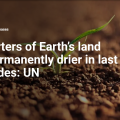
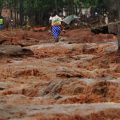 Insights for African countries from the latest climate change projections
Insights for African countries from the latest climate change projections
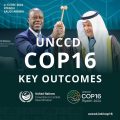 COP16 in Riyadh: World Leaders Commit $12.15B to Combat Land Degradation and Drought
COP16 in Riyadh: World Leaders Commit $12.15B to Combat Land Degradation and Drought
 UNCCD COP16: NGOs issue a stark warning and call for urgent actions to deal with the escalating threats of desertification, land degradation, and drought.
UNCCD COP16: NGOs issue a stark warning and call for urgent actions to deal with the escalating threats of desertification, land degradation, and drought.
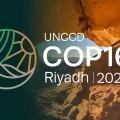 Restoring Our Land: Tackling Degradation for Climate Resilience, Food Security, and Sustainable Development at COP16
Restoring Our Land: Tackling Degradation for Climate Resilience, Food Security, and Sustainable Development at COP16
You may like
MEDIA FOR CHANGE NETWORK
StopEACOP Coalition warns TotalEnergies and CNOOC investors of escalating ‘financial and reputational’ Risks
Published
16 hours agoon
October 24, 2025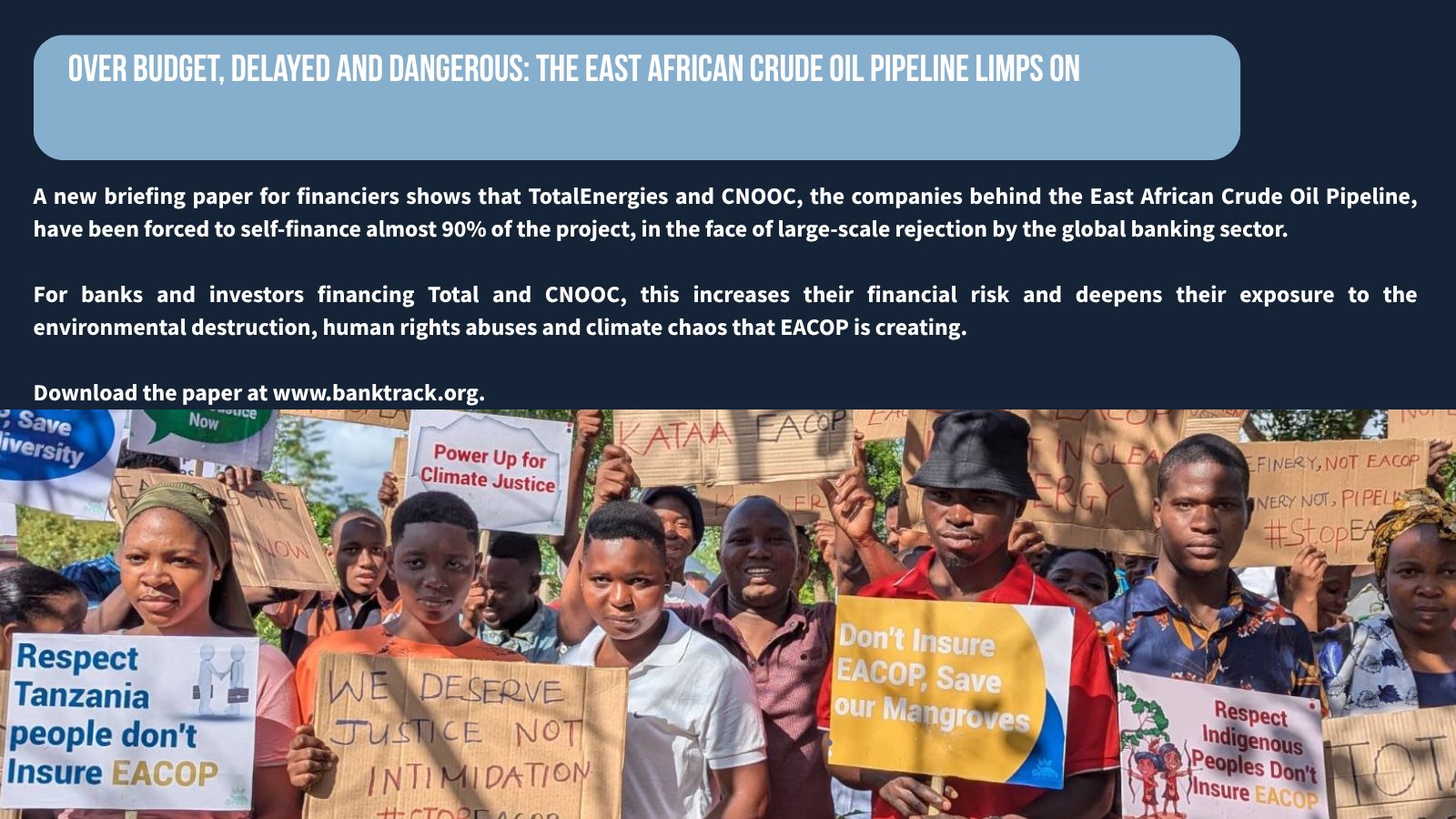
By Witness Radio Team
The StopEACOP Coalition has issued a warning to shareholders and bondholders of TotalEnergies and China National Offshore Oil Corporation (CNOOC), urging them to reconsider their funding of the East African Crude Oil Pipeline (EACOP) due to the companies’ growing self-financing of the project that exposes shareholders and bondholders to gross financial and reputational risks.
In a public statement released alongside its Finance Risk Briefing Update No. 6, the coalition revealed that the two energy giants have quietly decided to increase their financial commitments to the $5.6 billion pipeline, stepping in as lenders to their own project. This move reflects the collapse of external financing for EACOP amid widespread rejection by international banks and insurers due to the project’s environmental, human rights, and climate risks. These risks include environmental, human rights concerns, and climate-related issues.
According to EACOP Limited’s 2024 annual report, TotalEnergies and CNOOC have provided additional facilities through shareholder loans to fund what remains of the construction budget.
Initially projected to cost up to $3.5 billion and intended to be financed with 40% equity and 60% debt, the project’s cost has since increased to a whopping $5.6 billion. The two companies have already injected roughly $2.8 billion in equity and secured around $755 million in external loans, leaving a debt gap of approximately $2 billion. Currently, TotalEnergies and CNOOC are moving to cover that shortfall themselves, bringing their total funding to about $4.8 billion, or 86% of the project’s total cost, more than triple what they had initially planned to use.
“This is a shocking example of developers financing their own controversial project after being rejected by global financial institutions. It shows that the EACOP is no longer financially viable without corporate self-funding and that investors in these companies are now directly financing one of the most destructive fossil fuel projects in the world,” Reads part of the statement.
The coalition argues that by turning inward for financing, TotalEnergies and CNOOC have transferred financial, legal, and reputational risks to their own shareholders and bondholders.
“Now, to keep the project alive, TotalEnergies and CNOOC are turning inward, relying on their own balance sheets and, by extension, your capital. The situation increases your financial risk, deepens your exposure to the project’s growing controversy, and links your investment portfolios even more directly to the environmental destruction, human rights abuses, and climate chaos that EACOP represents,” the statement says.
“This means that institutional investors holding TotalEnergies or CNOOC securities are now directly linked to the project’s growing controversies, from land grabs and community displacement to the threat it poses to climate goals.”
EACOP is a 1,443-kilometer pipeline stretching from Uganda’s Lake Albert oilfields to the Tanzanian coast, which has faced heavy opposition since its inception. This opposition is due to threats to biodiversity and the environment, as well as to people’s displacement among others.
It is from this that the STOPEACOP coalition is calling for active engagement with TotalEnergies and CNOOC to jointly address human rights and environmental risks and identify a time-bound escalation strategy, where investors publicly set deadlines for the companies to act, backed by credible consequences such as voting against board members or divesting from the companies altogether.
“We are therefore calling upon the shareholders and bondholders of TotalEnergies and CNOOC to act with integrity and foresight, in line with their responsibilities under the UNGPs and the OECD Guidelines, to avoid contributing to severe human rights and environmental impacts associated with the operations of your portfolio companies,” reads the statement.
In the last three years, over 20 major banks and 23 insurers have publicly ruled out support for the EACOP project, citing misalignment with global climate targets and reputational concerns.
The Finance Risk Briefing shows that 43 banks have ruled out financing for the 1,443 km pipeline since the project began.
Governments and international organizations have also faced mounting pressure to intervene, as civil society movements in Uganda, Tanzania, and abroad intensify opposition to its implementation due to its adverse effects.
Related posts:

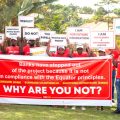 A Financial gap: Can China be stopped from financing the EACOP?
A Financial gap: Can China be stopped from financing the EACOP?
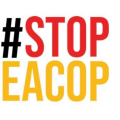 #StopEACOP campaign calls on Standard Bank to come clean about its funding of the East African Crude Oil Pipeline
#StopEACOP campaign calls on Standard Bank to come clean about its funding of the East African Crude Oil Pipeline
 Uganda: StopEACOP Campaign Condemns Standard Bank’s Decision to Fund EACOP
Uganda: StopEACOP Campaign Condemns Standard Bank’s Decision to Fund EACOP
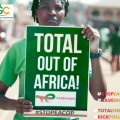 StopEACOP Movement calls for an end to harmful oil projects and demands a just transition.
StopEACOP Movement calls for an end to harmful oil projects and demands a just transition.
MEDIA FOR CHANGE NETWORK
12 anti-Eacop activists decry delayed justice after spending 100 days on remand
Published
2 days agoon
October 23, 2025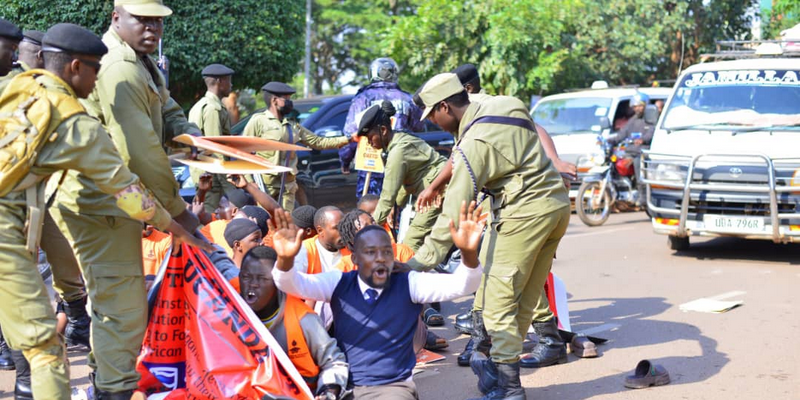
Twelve environmental activists who were arrested during protests against the East African Crude Oil Pipeline (EACOP) in August 2025 have decried delayed justice after their fourth bail application was rejected.
The presiding Senior Principal Grade One, Magistrate Winnie Nankya Jatiko, at Buganda Road Chief Magistrate’s Court, said the suspects’ case was in an advanced stage and therefore, there was no need to grant them bail despite the fact that they have spent nearly three months on remand.
The activists, most of whom are students from various universities in the country under their umbrella body, Students Against Eacop Uganda, an environmental pressure group, were arrested on August 1 after staging a peaceful protest near Stanbic Bank in Kampala, over what they described as the bank’s continued funding of the East African Crude Oil Pipeline (Eacop). They were first arraigned in court on charges of being a public nuisance and remanded to Luzira till September 5.
The suspects, who include Teopista Nakyambadde, Shammy Nalwadda, Dorothy Asio, Shafik Kalyango, Habibu Nalungu, Noah Kafiiti, Ismail Zziwa, Ivan Wamboga, Akram Katende, Baker Tamale, Keisha Ali and Mark Makoba, accused the bank of funding the ongoing construction of the 1,443km Eacop, claiming that the project is destructive to the environment.
They reappeared before the same court on August 18, and Ms Nankya denied them bail because some of them were perennial protestors who had repeatedly abused their bail terms.
She, on September 5, declined to hear their fresh bail application and adjourned the court session to October 1 after hearing evidence of three state witnesses.
Some of the state witnesses said they had seen some of the activists participating in more than one anti-Eacop protest.
Mr Kato Tumusiime, the lead lawyer for the activists, condemned the decision by the magistrate to rejects his clients’ bail application and described it as absurd and unfortunate.
“Failing to entertain the bail application prejudices the rights of the accused guaranteed by our Constitution, and the same is not only harsh but also illegal and unacceptable. It suggests that the activists have been found guilty before even hearing their case,” he said
He added, “This is unacceptable in our legal regime. We must fight for our judiciary to be independent and act in line with the law and not to please the people in power.”
The magistrate fixed November 6 when she will rule whether they have a case to answer.
Background
The activists have on several occasions protested in Kampala streets, including at Parliament, the French and Chinese Embassies, Stanbic and KCB Banks, over their substantial support for the Eacop project, which they say is harmful. This time, the bank announced its funding after key financiers withdrew.
However, the government and key stakeholders have dismissed the activists’ claims, defending their participation in the project, which is expected to transform the country’s economy once oil begins flowing.
The $5 billion (Shs18 trillion) EACOP project is a 1,443 km pipeline that will transport Uganda’s waxy crude oil from the oil fields in mid-western Uganda to Tanga port on the Indian Ocean in Tanzania.
The project is jointly owned by French oil giant, TotalEnergies (62 percent), the Uganda National Oil Company Limited (UNOC – 15 percent), China National Offshore Oil Corporation (CNOOC – 8 percent), and Tanzania’s Petroleum Development Corporation (TPDC – 15 percent) under EACOP Ltd.
Source: Monitor
Related posts:

 Breaking: Buganda Road Court grants bail to 15 stop EACOP activists after 30 days in prison.
Breaking: Buganda Road Court grants bail to 15 stop EACOP activists after 30 days in prison.
 The latest: Another group of anti-EACOP activists has been arrested for protesting Stanbic Bank’s financing of the EACOP Project.
The latest: Another group of anti-EACOP activists has been arrested for protesting Stanbic Bank’s financing of the EACOP Project.
 Breaking: 15 Anti-EACOP Activists have been charged with common nuisance and remanded to Luzira prison.
Breaking: 15 Anti-EACOP Activists have been charged with common nuisance and remanded to Luzira prison.
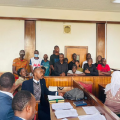 A bail application for the 15 EACOP activists failed to take off, and they were remanded back to Prison.
A bail application for the 15 EACOP activists failed to take off, and they were remanded back to Prison.
MEDIA FOR CHANGE NETWORK
‘They Stole Our Ancestors’: Ministry of Water, RDCs Accused of Land Grabbing and Grave Exhumation in Kanungu
Published
2 days agoon
October 23, 2025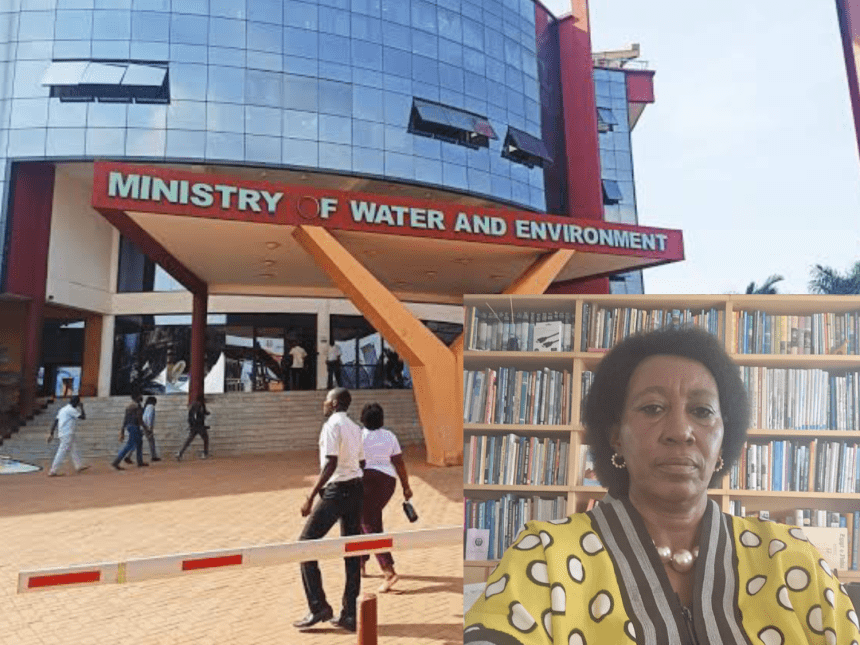
The Ministry of Water and Environment is under scrutiny over alleged illegal procurement of a 70.2-acre piece of land in Kihanda Sub-County, Kanungu District.
According to a petition dated October 10, 2025, submitted to the State House Anti-Corruption Unit, Christine Joy Tusiime accuses officials from the ministry of land grabbing, abuse of office, and criminal conduct. The land in question is her ancestral property located in Ibarya Cell, Kihanda Parish.
Tusiime claims that in August 2023, the government, through the Ministry of Water and Environment, entered into a purported land acquisition and compensation agreement with her for the family land. However, she insists that the transaction was done irregularly and without her informed consent. She further alleges that the land was under a caveat at the time, and that no official land valuation, boundary opening, or legal procedures were followed before compensation and takeover.
The Ministry of Water and Environment is jointly accused with several officials including Hajj Shafik Sekandi (former RDC of Kanungu, now RDC of Kisoro), Amanyire Ambrose Mwesigye (current RDC of Kanungu), his deputy Gad Rugajju, and GISO Ambrose Barigye. Also implicated are local leaders: Jessica Tindimwebwa (LC I Chairperson – Ibarya Cell), Davis Asiimwe (LC III Chairperson Kihanda Sub-County), and Lemegio Tumwesigye (LC II Chairperson – Kihanda Parish).
Tusiime alleges that these officials colluded to demarcate the family land into smaller plots for personal gain, disguised as government compensation. In her words, “To our disbelief, these individuals in government offices demarcated our ancestral land into plots, which they shared among themselves to access and grab money through the Ministry of Water and Environment’s purported compensation.”
She also claims that on October 3, 2025, RDC Mwesigye led a group that stormed their ancestral home, demolishing the house and toilet. Tusiime states that these individuals, using their positions in government, forcibly occupied and destroyed family property including homes, crops, and graveyards without following legal procedures. She further alleges that the accused exhumed bodies of their deceased siblings and took them to an unknown location without the family’s knowledge or consent.
A document reportedly in the possession of the family shows that a Ministry official, identified as Paul Nuwagira—a sociologist—wrote on the land title indicating it had been received for mutation and transfer. The note reads: “Original duplicate title received for purposes of mutation and transfer to the government of Uganda represented by the Ministry of Water and Environment after consent to compensation was reached between vendors and government.”
In a March 18, 2025, letter to the Ministry, Tusiime expressed strong opposition to the transaction, raising issues such as lack of a valuation report, absence of a proper boundary survey, inadequate compensation, harassment, intimidation, and overall fraudulent conduct. Through her lawyers, she pointed out that neither she nor her elder sister had legal capacity to transact over the land. She also noted that the government had failed to issue a certificate of title for the residue land where her family was supposed to be resettled or relocate their ancestral burial grounds.
Tusiime claims the government is proceeding with the development project on the disputed land, despite failing to meet its obligations under the so-called agreement. She alleges that government officials have since taken over the land, destroyed property, and issued threats—with the support of RDC Mwesigye, his deputy Rugajju, and local police.
In an interview, Tusiime said the dispute traces back to 2004 following the death of her mother, when her sister took possession of the family land. She said this triggered a series of actions by local officials aimed at displacing her and destroying her interests. “The RDC then did a report, and from that time, they began targeting us—destroying plantations and allowing others to use the land to undermine us,” she said tearfully.
Due to continued threats and property destruction, Tusiime fled Uganda in 2023 and now lives in the United Kingdom. She maintains that the government must lawfully purchase the land and not rely on what she describes as fraudulent compensation efforts. She further alleges that RDC Mwesigye and his deputy Rugajju are now profiting from the land through activities like charcoal burning and have destroyed their house. Her appeals to the police, she says, were ignored.
She added: “I am humbly appealing to the President to intervene in this matter and rescue me from these notorious criminals pretending to work for the government.”
Tusiime also claims that her attempt to open boundaries and prove the extent of land grabbing was blocked by authorities. She accuses lawyers from Mark Mwesigye Advocates of playing a role in alleged forgery and land fraud related to her property in Ibarya Cell, Kanungu.
RDC Amanyire Ambrose Mwesigye denied any wrongdoing. He said he held meetings involving both parties and advised them to approach the Administrator General. He acknowledged that the land was part of a government irrigation project and said that several families were consulted in 2022, and valuation exercises were conducted in 2023. “Their family was among those consulted. They consented, and they were paid Shs1 billion, which was shared between Christine and her sister. The houses that were demolished are those earmarked for removal to pave way for the project,” he said.
When contacted, Paul Nuwagira, the sociologist from the ministry who handled part of the process, maintained that he acted on behalf of the Ministry. “Whatever I did was under the mandate of the Ministry of Water and Environment. If there is any complaint, it should be addressed to the ministry leadership—not to me personally,” he said. “There are proper channels for handling these matters, and people should stop addressing ministry issues to individuals.”
Despite repeated attempts, the Permanent Secretary in the Ministry of Water and Environment, Dr. Alfred Okot Okidi, was not available for comment.
Tusiime continues to demand a full investigation into the matter, arguing that her family was defrauded and violently displaced from their land by individuals misusing government institutions.
Source: ankoletimes.co.ug
Related posts:
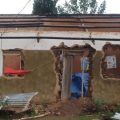
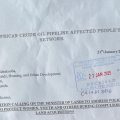 An early bird: oil-affected communities have launched a petition to the Lands Ministry, seeking protection of their rights in the face of forced acquisitions.
An early bird: oil-affected communities have launched a petition to the Lands Ministry, seeking protection of their rights in the face of forced acquisitions.
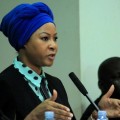 Army general accused of grabbing former IGP’s land
Army general accused of grabbing former IGP’s land
 Uganda’s top Lands Ministry official has been arrested and charged with Corruption and Abuse of Office, a significant event that will have far-reaching implications for land governance in the country.
Uganda’s top Lands Ministry official has been arrested and charged with Corruption and Abuse of Office, a significant event that will have far-reaching implications for land governance in the country.
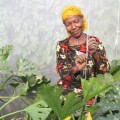 How food and water are driving a 21st-century African land grab
How food and water are driving a 21st-century African land grab

StopEACOP Coalition warns TotalEnergies and CNOOC investors of escalating ‘financial and reputational’ Risks

12 anti-Eacop activists decry delayed justice after spending 100 days on remand

‘They Stole Our Ancestors’: Ministry of Water, RDCs Accused of Land Grabbing and Grave Exhumation in Kanungu

Failed US-Brokered “Peace” Deal Was Never About Peace in DRC

Uganda is on a mission to plant over 40 million trees by October 3, 2025, a crucial step in combating the alarming decline in its forest cover.

The 4th African Forum on Business and Human Rights: The rapidly escalating investment in Africa is urgently eroding environmental conservation and disregarding the dignity, the land, and human rights of the African people.

Oil palm tree growing in Uganda: The National Oil Palm Project is threatening to evict hundreds of smallholder farmers to expand its operations.

The 4th African Forum on Business and Human Rights: The African continent is lagging, with only a few member states having adopted the National Action Plan (NAP) on Business and Human Rights.

Innovative Finance from Canada projects positive impact on local communities.
Over 5000 Indigenous Communities evicted in Kiryandongo District
Petition To Land Inquiry Commission Over Human Rights In Kiryandongo District
Invisible victims of Uganda Land Grabs
Resource Center
- REPARATORY AND CLIMATE JUSTICE MUST BE AT THE CORE OF COP30, SAY GLOBAL LEADERS AND MOVEMENTS
- LAND GRABS AT GUNPOINT REPORT IN KIRYANDONGO DISTRICT
- THOSE OIL LIARS! THEY DESTROYED MY BUSINESS!
- RESEARCH BRIEF -TOURISM POTENTIAL OF GREATER MASAKA -MARCH 2025
- The Mouila Declaration of the Informal Alliance against the Expansion of Industrial Monocultures
- FORCED LAND EVICTIONS IN UGANDA TRENDS RIGHTS OF DEFENDERS IMPACT AND CALL FOR ACTION
- 12 KEY DEMANDS FROM CSOS TO WORLD LEADERS AT THE OPENING OF COP16 IN SAUDI ARABIA
- PRESENDIANTIAL DIRECTIVE BANNING ALL LAND EVICTIONS IN UGANDA
Legal Framework
READ BY CATEGORY
Newsletter
Trending
-
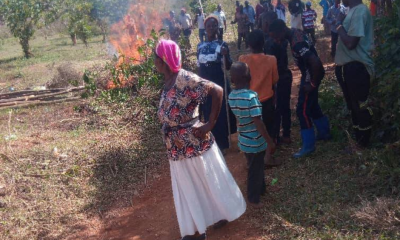
 MEDIA FOR CHANGE NETWORK1 week ago
MEDIA FOR CHANGE NETWORK1 week agoOil palm tree growing in Uganda: The National Oil Palm Project is threatening to evict hundreds of smallholder farmers to expand its operations.
-
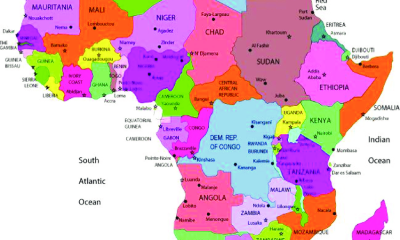
 MEDIA FOR CHANGE NETWORK2 weeks ago
MEDIA FOR CHANGE NETWORK2 weeks agoThe 4th African Forum on Business and Human Rights: The African continent is lagging, with only a few member states having adopted the National Action Plan (NAP) on Business and Human Rights.
-

 MEDIA FOR CHANGE NETWORK1 week ago
MEDIA FOR CHANGE NETWORK1 week agoNew! The Eyes on a Just Energy Transition in Africa Program is now live on Witness Radio.
-

 MEDIA FOR CHANGE NETWORK5 days ago
MEDIA FOR CHANGE NETWORK5 days agoKnow Your Land rights and environmental protection laws: a case of a refreshed radio program transferring legal knowledge to local and indigenous communities to protect their land and the environment at Witness Radio.
-
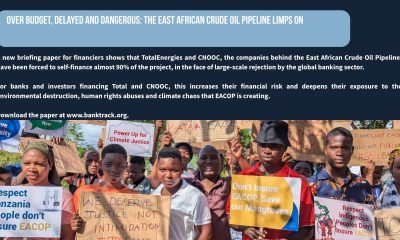
 MEDIA FOR CHANGE NETWORK16 hours ago
MEDIA FOR CHANGE NETWORK16 hours agoStopEACOP Coalition warns TotalEnergies and CNOOC investors of escalating ‘financial and reputational’ Risks
-
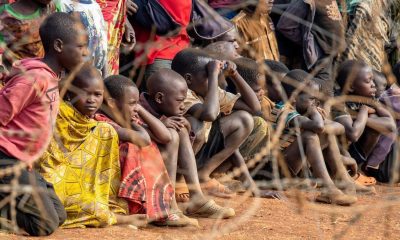
 NGO WORK3 days ago
NGO WORK3 days agoFailed US-Brokered “Peace” Deal Was Never About Peace in DRC
-

 MEDIA FOR CHANGE NETWORK1 week ago
MEDIA FOR CHANGE NETWORK1 week agoRDCs, Local Leaders Accused of Grabbing 70-Acre Ancestral Land
-
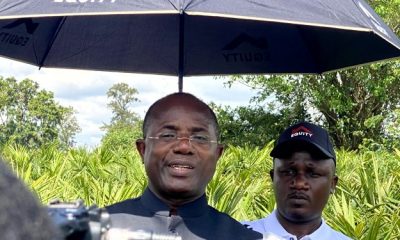
 MEDIA FOR CHANGE NETWORK5 days ago
MEDIA FOR CHANGE NETWORK5 days agoGov’t Seeks Land to Establish Palm Oil Mill and Nursery in Busoga

